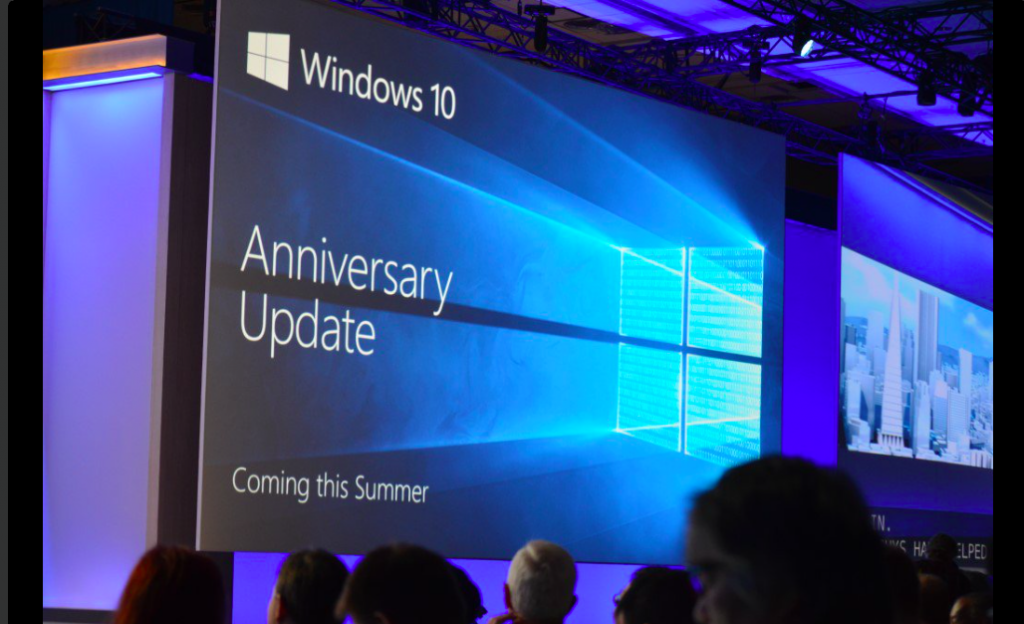Countdown to Windows 10 Anniversary Update: What to expect

Microsoft has been hard at work, pushing as many as five consecutive Windows 10 Insider Preview builds, only this month. Rumor has it that the latest build 14393 is the very last build before the official Anniversary Update is released on August 2nd. This latest build features numerous stability improvements, as well as a few bugs affecting Surface Pro and Surface Book devices, for which a patch has already been issued.
On July 29th of last year, Windows 10’s journey began, with Microsoft offering to upgrade existing owners of valid Windows 7 and Windows 8.1 licenses, to Windows 10 for free, within the first year of the operating system’s release. Ever since, Microsoft Windows 10 has been installed and actively used in over 350 million devices, according to last month’s numbers. The offer will end this month, and after that the cost to purchase a new Windows 10 license, or upgrade from Windows 7 or Windows 8.1, will be $119 for the regular “home” Windows 10 version, and $199 for the Pro version.
Mobile notifications
There are quite a few things to look forward to, as we wait for the Anniversary Update, some of which will be particularly relevant to mobile users as well, regardless of whether they are using Android or Windows Phone.
Speaking of which, as of August 2nd, Windows 10 users will be able to mirror and reply to mobile notifications, directly from Windows 10’s Action Center. This means that text messages, emails, and other app notifications will show up in the Windows 10 Action Center, and feature the ability to respond, where applicable. With that said, not every app notification can be replied to, which includes phone calls, although there just might be a chance of Microsoft working on a way to answer phone calls using Skype, in a similar way as Apple does with FaceTime on the Mac. For now, however, replying to text messages seems to work fairly well, at least on the regular version of Windows 10, while the Pro version seems to need a bit more work.
Taskbar enhancements
The Windows taskbar has seen some interesting improvements over the past year, including the combining of the calendar and the clock into one panel, and the ability to customize it to display multiple times from different timezones.
Improvements in Microsoft Edge
Edge has matured quite a lot as the browser meant to end Internet Explorer’s legacy. Edge is definitely more efficient, refined and more secure than Internet Explorer in every possible way, not to mention support for the latest HTML5 and CSS3 standards, allowing to render modern websites a lot more consistently, and in line with other more popular browsers, including Google Chrome.
What has been missing, however, is the support for browser extensions, which was initially withheld due to safety concerns.Those concerns have been finally addressed, with Microsoft enabling support for extensions, via the Windows Store, which provides a secure location from which to download extensions and enhancements for Microsoft Edge, such as AdBlock Plus, Page Analyzer, Reddit Enhancement Suite, and Office Online.
Other improvements in Microsoft Edge include:
- The ability to automatically prevent Flash video playback, which results in dramatic battery improvements on laptops and Windows 10 tablets.
- Paste-and-go option in the address bar, similarly to Chrome
- Better bookmarks
- Notifications from websites directly in the Action Center
- Swipe navigation
- Drag and drop files and folders from File Explorer into cloud storage services like DropBox and Google Drive
- Notifications about ongoing downloads after closing the browser
- A history of the most recent pages visited when clicking on the back or forward button.
Cortana
Microsoft’s virtual assistant is in constant evolution, and as of Windows 10 Anniversary update, it will be even more accessible. In fact, Cortana will be available on the lock screen. With that said, Cortana on the lock screen won’t be able to do much more than it would on a mobile device, which means that it won’t be able to open apps from the Windows Store, or any desktop applications or settings, but rather it will be able to perform simple tasks like creating reminders and calendar entries, and looking up directions.
Biometric recognition for Apps and the Web
In the wake of Apple enabling Touch-ID and Apple Pay on websites viewed in Safari, Microsoft has been working on a similar feature in Microsoft Edge, by letting developers interface with Windows Hello biometric recognition, to log into websites(Edge only) and apps from the Windows Store.